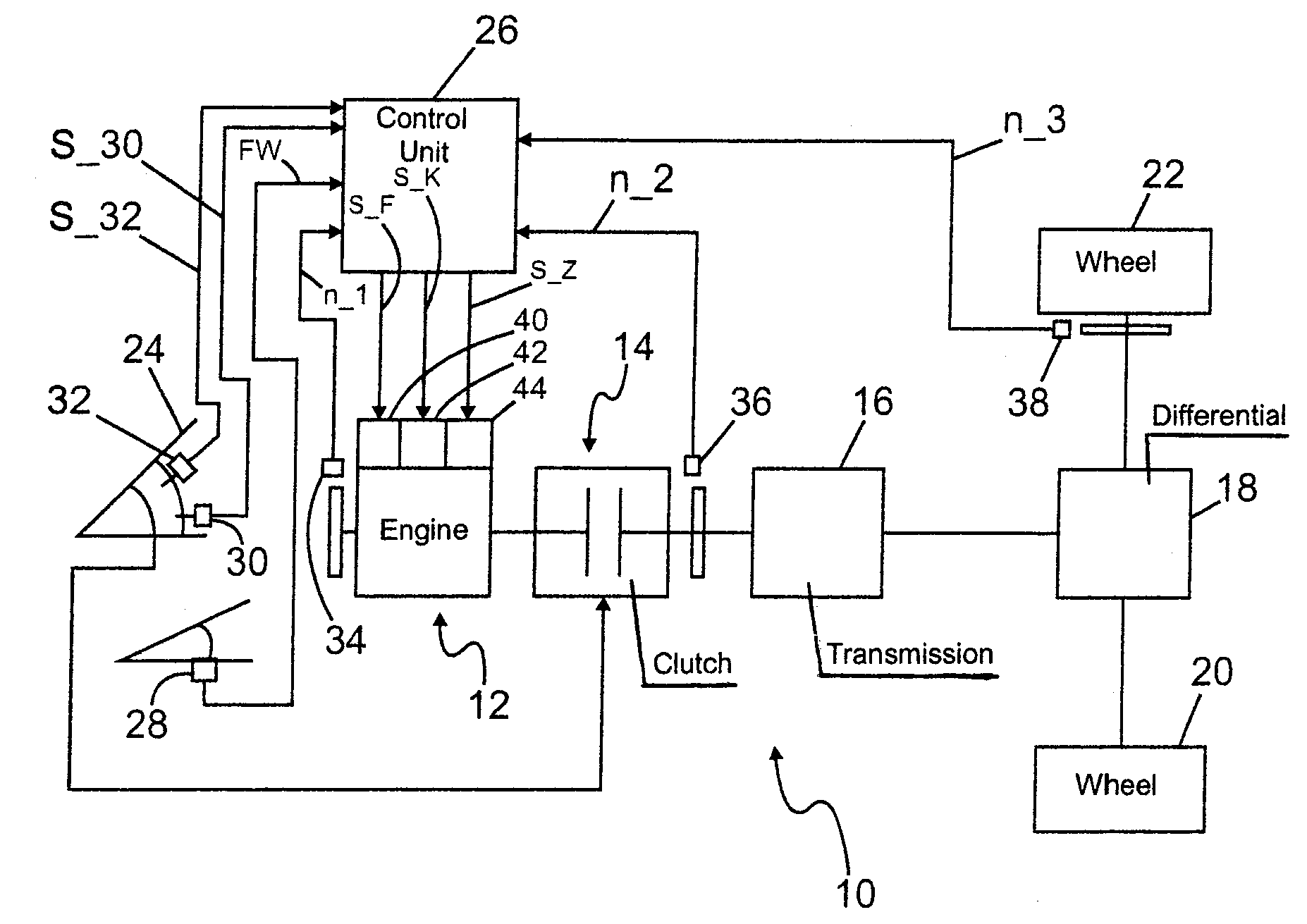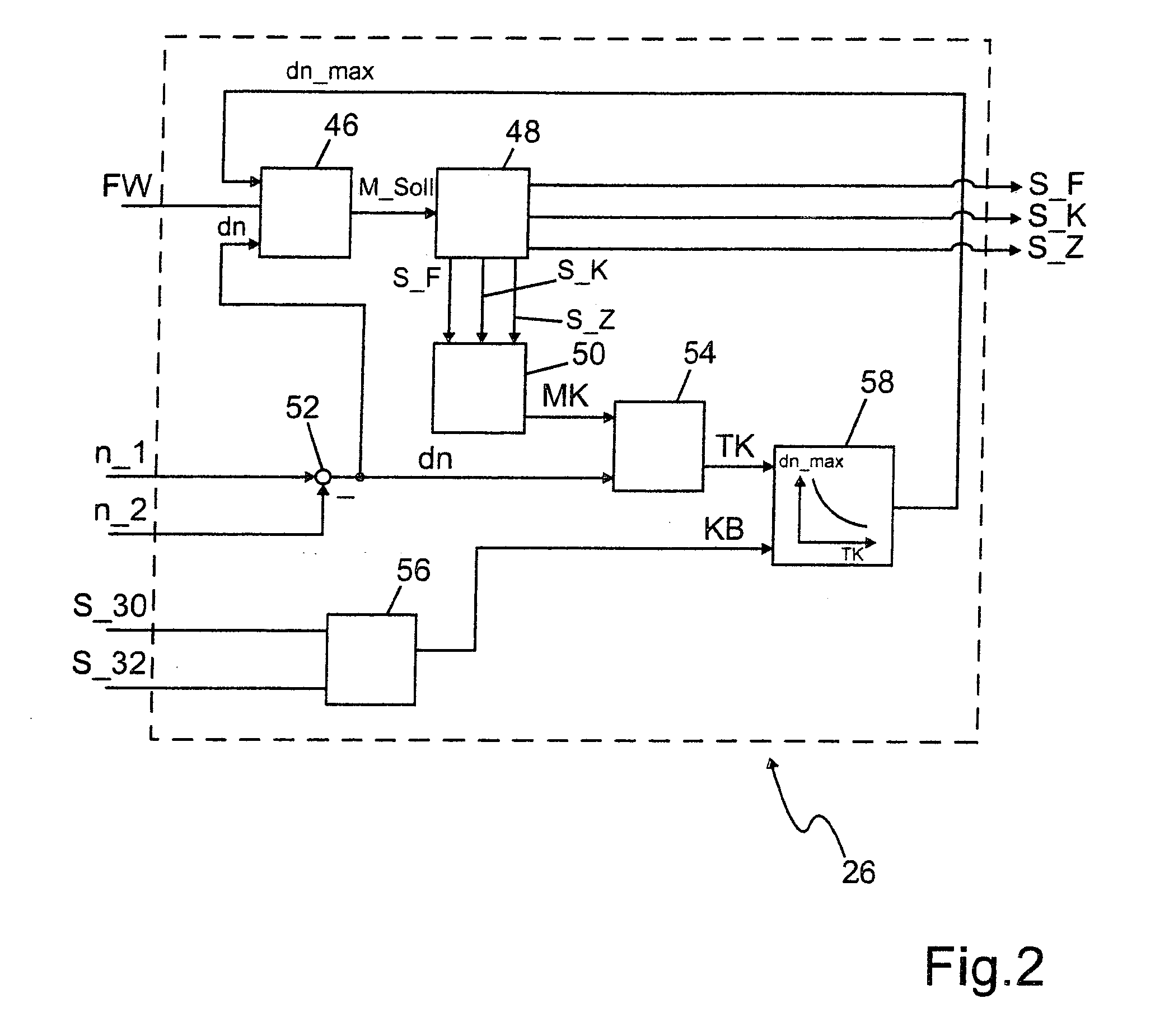Method and Control Unit for Protecting a Clutch in a Drivetrain of a Motor Vehicle
a technology of a control unit and a drivetrain, which is applied in the direction of brake action initiation, braking system, position/direction control, etc., can solve the problems of completely different values of the clutch torque, and achieve the effect of reducing the clutch torque, reducing the torque value, and high rotational speed
- Summary
- Abstract
- Description
- Claims
- Application Information
AI Technical Summary
Benefits of technology
Problems solved by technology
Method used
Image
Examples
Embodiment Construction
[0025]Referring now to the figures of the drawing in detail and first, particularly, to FIG. 1 thereof, there is shown a drivetrain 10 of a motor vehicle having an internal combustion engine 12, a clutch 14, a variable-speed transmission 16, a differential 18 and drive wheels 20, 22. The clutch 14 is a friction clutch which is actuated by the driver of the motor vehicle. Conventional friction clutches have at least one driver plate which is pressed by a spring-loaded pressure plate against a flywheel of the internal combustion engine 12. The driver plate is connected in an axially movable but rotationally fixed manner to a transmission input shaft. In the closed state of the clutch 14, the torque of the internal combustion engine 12 is, by a force-fitting action, transferred into the driver plate of the clutch 14 and transmitted from there to the transmission input shaft.
[0026]The actuation of the clutch 14 takes place counter to the spring loading. In this application, an actuation...
PUM
 Login to View More
Login to View More Abstract
Description
Claims
Application Information
 Login to View More
Login to View More - R&D
- Intellectual Property
- Life Sciences
- Materials
- Tech Scout
- Unparalleled Data Quality
- Higher Quality Content
- 60% Fewer Hallucinations
Browse by: Latest US Patents, China's latest patents, Technical Efficacy Thesaurus, Application Domain, Technology Topic, Popular Technical Reports.
© 2025 PatSnap. All rights reserved.Legal|Privacy policy|Modern Slavery Act Transparency Statement|Sitemap|About US| Contact US: help@patsnap.com



